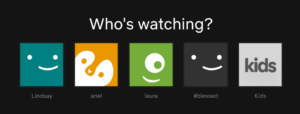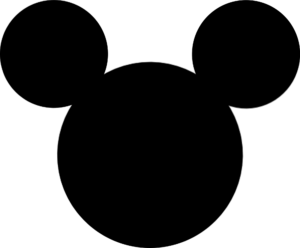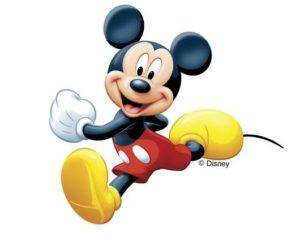Disney is Going to Win D2C

Disney is in a great position to win the Direct to Consumer fight.
The Challenge
The Direct to Consumer fight is going to be a competitive one, particularly since tech giants such as Facebook, Amazon, and Apple [1] have been making investments into content creation and aggregation – both of which were formerly media company-first areas. Disney is a little late to the game since they continued to rely on cable and other traditional mediums and participated in streaming services without creating their own. However, it’s clear that they have been disrupted by the Hulu’s and Netflix’s of the world, so it’s time. That being acknowledged, I believe Disney is in an amazing position to win this fight because of their high quality content as a competitive edge. In order to address the challenges ahead, they need to be unafraid to step into a world where they may initially need to cannibalize some of their more established business pursuits.

For anyone who has taken Professor Anita Elberse’s Business of Entertainment, Media, and Sports class, you don’t need to be told that winning at content is founded upon the creation of big blockbuster hits and the ability to win consumers on these big events as opposed to aggregating a lot of decent but not amazing content (aggregation theory – more Netflix’s strategy). Disney and even non-media companies like Apple have taken this strategy (e.g. with their conferences and product releases), and have proven to be wildly successful. Instead of having a lot of mediocre to good products, they focus on putting all of their resources towards making a handful of really amazing ones.
The Opportunity
What I’d like to see for Disney, is for them to create a Direct to Consumer experience (which they already on their way to do [2]) that is really *magical*! Luckily, this is their forté.
I’m envisioning a product that solves the following issues that I believe have arisen from the introduction of cord cutting, streaming services:
- I just want to turn the TV on – The beauty of cable was that when you woke up, the TV would be turned on and playing the background, with sounds of the Today Show or another news show, wafting into your ears as you made your breakfast and brushed your teeth. Now, every time you turn on your TV you’re faced with a decision – what do you want to watch? It sounds minimal, but it’s a source of frustration, and these small pockets of time that used to effortlessly be filled with entertainment or information are now lost by cord cutting.
- I want to experience it with my friends – The exciting event nature of TV has been removed (e.g. everyone watching American Idol finale at the same time) has been taken away. There was something very compelling about everyone watching the same thing at the same time – the Olympics, the Super Bowl, and/or any sporting event still capture this! Luckily, Disney owns ESPN…
- I want TV to make me happy – I do not find Netflix’s harsh black and red interface to be very charming. It sounds crazy, but I almost miss ads – while our attention spans have changed, and perhaps the amount of ads on cable are no longer fitting, they tended to be more active, uplifting and entertaining than the empty black background/interface that is Netflix’s welcome screen.
- Just let me find what I want – Instead of having a TV where the TV guide functions as an interface, there’s Hulu, Netflix, HBO Go, Amazon Prime, etc. on various devices. These are disjointed experiences all with difference interfaces. Perhaps most annoyingly, when there’s a movie you want to find, you have to go through each separate products’ search engine.
- Give me ownership – As much as I love having access to a ton of content, there was something rewarding about having a DVD library that let me know I could watch a movie whenever I wanted, and that expressed a part of me – what kinds of movies I was into.
- Make it personal – the following Netflix profile images below don’t really resonate with me. There’s an opportunity to make this experience more fun!

Threats
I think part of the reason Disney has not already pursued this is due to their deals with cable companies tied to ESPN. It is well known that ESPN is a huge part of why some consumers keep their cable subscriptions instead of cord cutting [3].
Additionally, they have shied away from leaning into streaming services because they are one of the only companies who can still charge $20 for a single movie in any format (parents are willing to by The Little Mermaid at any cost – some even still use passed down VHS’s). If they aggregate all of their content, it might be worth less than if they continue to pursue more traditional paths (i.e. DVDs, iTunes sales).
Overall, this has to be an uncomfortable move, especially since in the interim they are still doing OK with these sales. However, this isn’t a sustainable solution, especially as competitors beef up their own studios and content purchases within these streaming services.
Implementation & Potential Resistance
Disney is the best company to solve these user pain points stemming from what’s missing from streaming services between the content and the container.
- With ABC, ESPN, Marvel, Pixar, Disney Studios, the work in progress acquisition of much of FOX [4], and other content assets, they clearly have an expansive amount of high quality content.
- As far as the container (user experience / interface), Disney has expertise in creating magical experiences, so they just need to take some of the experts in content creation and point them towards their UI using people who have experience working in innovation/digital transformation to bridge the gap between the creatives and their engineers. They will need to re-allocate resources to create an integrated, interdisciplinary team. I worked on one of these at The New York Times where we took journalists from the newsroom, a designer, a product manager, researchers, etc. to all focus on the creation of a new product that bridged the gap between the talent and journalistic integrity of the newsroom with engineering and business experts to create something that all parties could take pride in. This cross pollination led to some of the company’s most innovative solutions and products. Disney should take some of their creatives who focus on the production of characters, products, and storylines, and get them to work alongside UI designers, product managers, and tech & business strategists.
Part of the issue with implementing this interdisciplinary effort, is that it requires a company that is spread out geographically and seemingly culturally to come together. For example, ABC and ESPN are in New York and Connecticut, but headquarters are in LA. There may need to be some colocating efforts. Additionally, there will be some initial cultural friction, but through this will come learning and growth. Given that all of these divisions are under the Disney umbrella, and all want to see it succeed, I have no doubt that they will work through these barriers.
Sources
- Etherington, Darrell. “Apple Said to Be Spending $1 Billion on Original Content in 2018.” TechCrunch, TechCrunch, 16 Aug. 2017, techcrunch.com/2017/08/16/apple-said-to-be-spending-1-billion-on-original-content-in-2018/.
- Lafayette, Jon. “Disney Set to Launch Direct-to-Consumer Services.” Broadcasting & Cable, 8 Aug. 2017, www.broadcastingcable.com/news/disney-set-launch-direct-consumer-services-167776.
- Greenberg, Julia. “ESPN May Finally Be Ready to Kill the Cable Bundle.” Wired, Conde Nast, 8 Mar. 2018, www.wired.com/2016/01/espn-will-finally-kill-the-cable-bundle-in-2016/.
- Littleton, Cynthia, and Brian Steinberg. “Disney to Buy 21st Century Fox Assets for $52.4 Billion in Historic Hollywood Merger.” Variety, 14 Dec. 2017, variety.com/2017/biz/news/disney-fox-merger-deal-52-4-billion-merger-1202631242/.





I agree that Disney is one of the few legacy media companies well-positioned to actually compete with Netflix and Hulu in offering direct-to-consumer offerings. Netflix continues to spend exorbitant amounts (reportedly up to $8 billion this year) on content, but since they first launched their streaming service, they have made only minimal improvements to the user experience. They derive most of their power now from their ability to attract and pay high-profile talent (for example, luring Shonda Rhimes from ABC and Ryan Murphy from FOX), with the process of complete artistic license. Their streaming service was novel for its UX at the time, but they’ve barely invested much into it since. In addition, there has been slight pushback recently as content creators prefer to go to traditional distribution channels because they don’t want their content lost Netflix’s endless library — they want more control over the way that people watch it (e.g. in a theater). Disney has an opportunity to compete by vastly improving the UX, since it is already embedded into their culture, as Laura noted.
Very interesting to see how Disney’s streaming services will play out. While the Company is best fit to compete with Netflix and Hulu, there is a first-mover advantage. As JZ has mentioned, Netflix, Hulu, and Amazon have invested billions of dollars on original content, which have helped them acquire and retain new customers customers. Furthermore, Netflix has also invested in children’s content as a way to keep parents on its platform, which can make Disney’s value proposition less unique for many customers. Disney also needs to think about potentially expanding into R-rated content, as their existing focus may limit their customer growth. However, I do think there is significant opportunity for Disney to incorporate real-time events, such as sports events from ESPN, onto its streaming platform. This will put Disney a significant edge over its competitors and allow its customers to access a different type of content and experience that other online competitors are not able to offer.
I love your list of desired attributes for a D2C disney platform. Keeping it simple, and focused on the end consumers experience is going to be critical to compete digitally. I think those simple fixes you mentioned, even just having something playing before you browse, shows why there are still billions of dollars wrapped up in linear cable TV and why it has not fallen and disappeared as fast as everyone has been predicting. The browsing experience leaves much to be desired on Netflix, if disney can build into their digital iteration feedback loop a focus on customizing individual’s browsing experience to decrease decision making time and quickly get content infront of your eyes, I think they stand to build a very strong moat (along with their content, of course) against the likes of amazon or netflix.
I think your argument gets at what’s more valuable, the long tail or the short tail and I think it’s a more complex argument than you make in your post. While I certainly appreciate that blockbuster hits generate demand, I think their staying power is relatively short. I think the beauty of a Netflix style platform is that they’re not only able to generate new content (especially serial content like Orange is the New Black and Stranger Things), but they’re able to present all their shows in a way that encourages re-watching or the recycling of old content.
I agree that the fight is far from won, but I think you should give a little more credit to the Netflix corner.